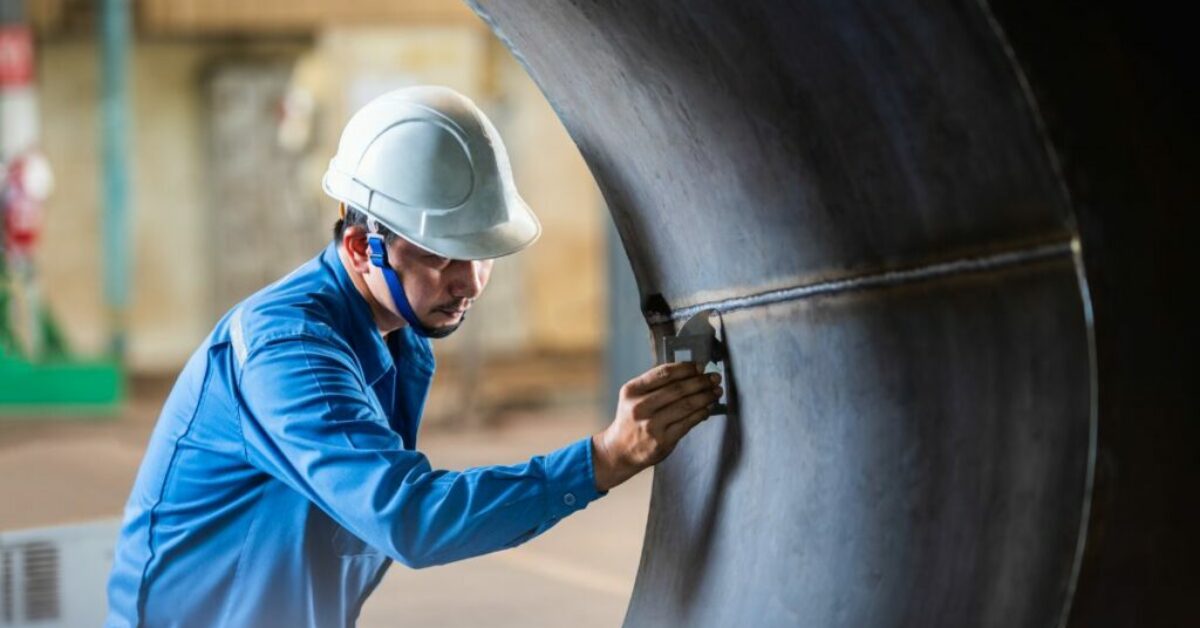Dependable Welding Inspection Gilbert Arizona: Key Factors to Take Into Consideration for Optimum Outcomes
Checking Out the Value of Welding Evaluation in Industrial Applications: Securing Versus Failings and Enhancing Longevity
Welding examination offers as a critical line of protection in industrial applications, ensuring the architectural honesty and integrity of bonded parts. By methodically recognizing flaws such as porosity and insufficient combination, assessments not just avoid failures however likewise prolong the lifespan of important assets.
Function of Welding Evaluation
Welding evaluation serves as a crucial protect in commercial applications, making certain that bonded frameworks satisfy specified requirements of high quality and security. This process involves a systematic examination of welds to verify their stability, stamina, and conformity with well established codes and specifications. The role of welding inspection is complex, including both visual analyses and non-destructive testing approaches, which may consist of ultrasonic, radiographic, or magnetic bit screening.
Additionally, welding examination plays an essential function in governing compliance. Several sectors are controlled by rigid safety standards, demanding thorough paperwork and validation of welding techniques. By maintaining these documents, organizations can show adherence to security policies, thereby promoting trust among stakeholders and customers. Eventually, the function of welding assessment is essential in advertising safety and security, boosting performance, and securing investments in industrial framework.
Usual Welding Issues

Among one of the most common flaws is porosity, characterized by little gas pockets caught within the weld steel. This happens because of contaminants or incorrect shielding gas, compromising the weld's strength. An additional substantial flaw is insufficient combination, where the weld metal fails to bond properly with the base product, possibly causing structural weaknesses.
Splits can additionally create during or after the welding process, often attributed to thermal stresses or inappropriate cooling rates. In addition, undercutting, where the base metal is deteriorated along the weld grain, can compromise the joint and is frequently triggered by too much warm input or incorrect technique.
In addition, lack of infiltration happens when the weld steel does not reach the root of the joint, bring about insufficient strength. Recognizing these typical problems is important for examiners and welders alike to make sure that welded frameworks satisfy safety and security and efficiency standards, inevitably protecting against prospective failures in commercial applications.
Advantages of Normal Evaluations
Normal inspections function as a crucial secure in ensuring the dependability and long life of welded structures. These examinations recognize potential problems and weak points that might compromise the stability of welds, enabling prompt remediation before problems rise. By executing an organized evaluation regimen, companies can considerably minimize the threat of catastrophic failures that might bring about expensive downtime, equipment replacement, and even mishaps.
In addition, normal assessments add to improved quality control throughout the welding procedure. By adhering to a consistent examination schedule, business can make sure that their welding practices satisfy well established top quality benchmarks and finest techniques. This not just fosters a culture of accountability however also encourages continuous improvement among welding employees.
In enhancement, routine examinations assist in much better upkeep planning. By recognizing damage early, organizations can strategically arrange substitutes and repair services, decreasing interruption to procedures. This proactive strategy ultimately brings about prolonged asset life-span and boosted general efficiency.
Lastly, a dedication to regular inspections can boost a firm's online reputation in the industry. Clients and stakeholders significantly worth organizations that focus on security and quality, consequently enhancing trust and potentially bring about raised business opportunities.
Market Criteria and Regulations
Complying with industry standards and regulations is a fundamental facet of welding inspection that complements the benefits of normal evaluations. These standards, established by companies such as the American Welding Culture (AWS) and the American Culture of Mechanical Engineers (ASME), supply a framework for best methods in welding procedures, materials, and inspection techniques. Conformity with these laws makes certain that welds fulfill the required high quality and security criteria, dramatically lowering the threat of architectural failures.
Regulative bodies like the Occupational Safety And Security and Health And Wellness Administration (OSHA) better implement standards that protect employees and the atmosphere during welding operations. By adhering to these established criteria, markets can improve the integrity of their frameworks and components, guaranteeing they perform as intended under various operational problems.
Additionally, adherence to sector standards cultivates consistency in top quality control, facilitating smoother communication among stakeholders and regulative firms. This placement not only minimizes liability threats however also enhances the credibility of companies in open markets. Eventually, conformity with welding standards and policies is not merely a lawful obligation; it is an essential investment in safety and security, performance, and long-lasting functional success.
Future Trends in Welding Examination
As industries continue to evolve, the future of welding examination is poised to incorporate sophisticated modern technologies that improve precision and performance. One of the most significant fads is the adoption of automation and robotics in assessment procedures. Automated systems can perform examinations quickly, minimizing human mistake and increasing throughput in making environments.
Furthermore, the combination of synthetic intelligence (AI) and artificial intelligence formulas will certainly allow anticipating analytics, enabling real-time evaluations and positive maintenance (Welding Inspection Gilbert Arizona). By analyzing information from previous inspections, these modern technologies can determine patterns that might show possible failures, therefore prolonging the life-span of bonded elements

In check this addition, the fad towards digitalization will certainly cause enhanced information monitoring systems that assist in better tracking, reporting, and compliance with industry criteria. In summary, the future of welding evaluation is characterized by technological developments that assure to significantly improve reliability, security, and operational efficiency in various industrial applications.
Conclusion
To conclude, welding click here to find out more assessment offers a vital feature in ensuring the stability and durability of welded structures across numerous industrial applications. By determining problems such as porosity and insufficient fusion, normal examinations play a considerable duty in threat mitigation and quality control. Adherence to industry standards and policies even more improves operational security and reliability. As innovations in technology remain to advance, the future of welding examination guarantees raised precision and efficiency, ultimately adding to the longevity of important infrastructures.
Welding examination offers as an essential line of protection useful site in industrial applications, making sure the architectural integrity and dependability of welded parts.Welding examination offers as an important guard in industrial applications, ensuring that bonded frameworks fulfill defined standards of quality and security - Welding Inspection Gilbert Arizona. Ultimately, the function of welding evaluation is essential in promoting safety and security, enhancing performance, and shielding financial investments in commercial infrastructure
These criteria, developed by companies such as the American Welding Society (AWS) and the American Society of Mechanical Designers (ASME), provide a structure for ideal techniques in welding procedures, products, and assessment techniques.In final thought, welding inspection offers a vital feature in ensuring the integrity and resilience of welded frameworks across various industrial applications.